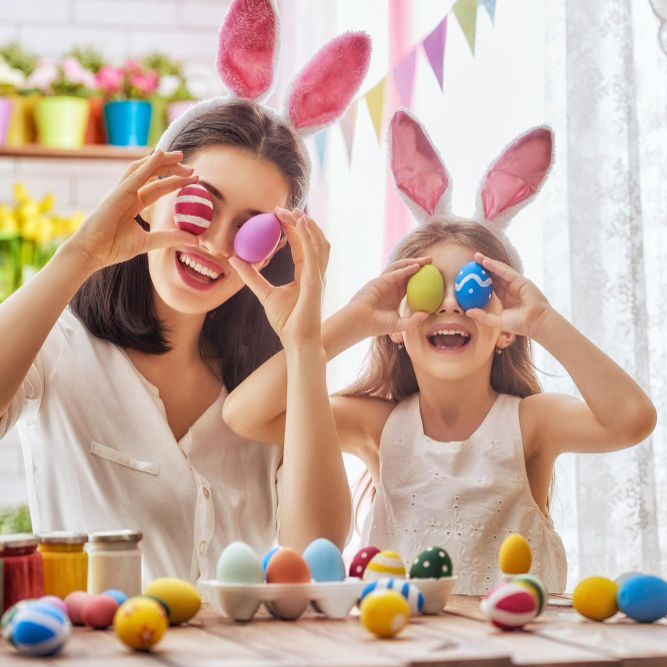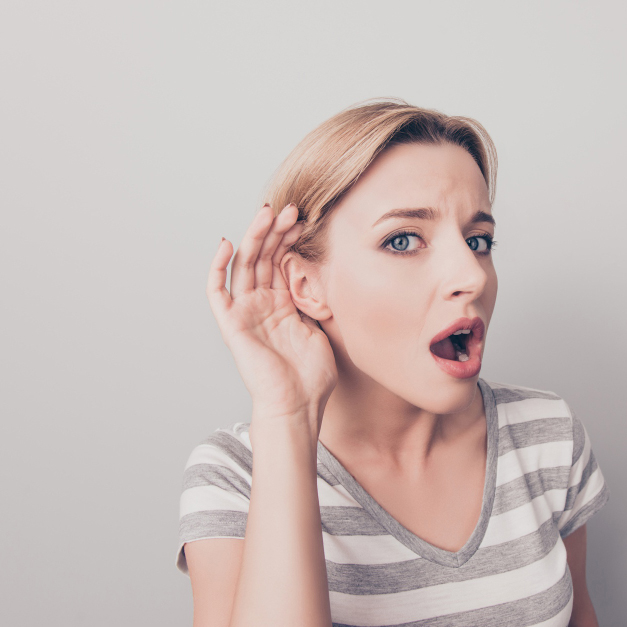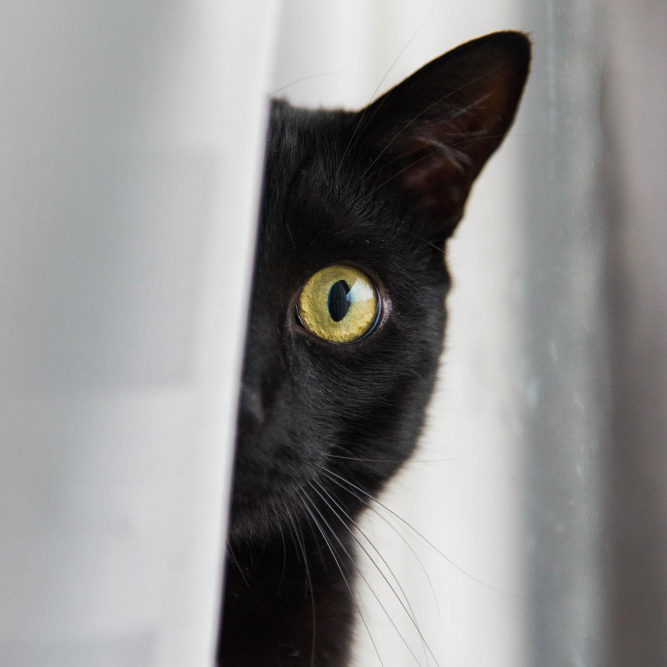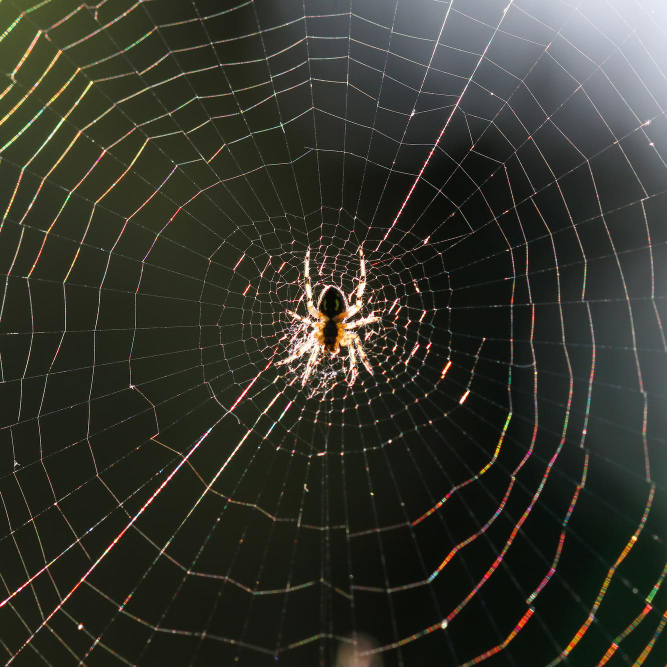Easter is a special time of the year that holds deep spiritual significance for Christians worldwide. It is a time of reflection, gratitude, and renewal. While Easter is commonly associated with painted eggs and the Easter Bunny, there are deeper spiritual meanings behind these symbols. Understanding these spiritual meanings can enrich our celebration of Easter and deepen our connection to its message. In this article, we will explore 11 profound spiritual meanings of Easter related to eggs and rabbits, and the messages they hold for the year 2023.
1. The Symbolism of Eggs in Easter: Rebirth and Resurrection
Think of an egg and what comes to mind? Enclosed within a hard shell is life waiting to emerge. An egg is about wholeness, potential, and new beginnings.
Unsurprisingly, one of the spiritual meanings of Easter eggs is all about transformation and birth. Eggs have been considered sacred for thousands of years across different societies. The Easter egg tradition represents a powerful metaphor for the earthly journey of the soul.
Picture an egg rolling down a grassy hill. It begins with the journey from the top of the hill where the sky meets the sun. At the bottom is mother earth. As the egg rolls down, it cracks open to reveal the baby bird within.
In certain cultures, people believe that the universe itself was created by an egg. Hindu tradition speaks of the cosmic golden egg, Hiranyagarbha.
The egg is an incredibly potent symbol with deep spiritual significance in Christian teachings too.
Eggs represent Jesus Christ’s resurrection from death. In times past, people gave up consuming eggs during Lent (the 40 days before Easter). The fast was a way for Christians to prepare themselves for Jesus’ resurrection by purifying their bodies from sinful practices.
According to myth, St. Mary Magdalene met with Emperor Tiberius and presented him with a plain white egg. She used it as a symbol for Jesus’ resurrection due to her great faith in Christ.
Tiberius scoffed and claimed that a human could no more rise from death than an egg could turn red. Miraculously, at that very moment, the white egg turned bright red.
From that time on, Christians all over the world exchanged red eggs on Easter Sunday as a sign of Christ’s resurrection.
Moreover, early Christians embraced eggs as symbolic of Jesus’ empty tomb. Just as a chick breaks out of an egg shell, so too did Jesus’ body break free from his tomb after three days.
In some traditions, people tell a story about Mary Magdalene giving Emperor Tiberius an egg that turned red after Christ’s resurrection. This story connects with the symbolism of Easter eggs and rabbits.
2. Eggs as a Sign of New Beginnings and Transformation
Easter eggs are a symbol of new beginnings, life, and spiritual awakening. Since the yolk in an egg represents the sun from a mystical perspective, Easter eggs represent an opportunity to let the light of spiritual consciousness into our lives so we can fully awaken.
For many people, Easter signifies the end of winter as well as a time to prepare for new beginnings. This transition from winter to spring is signified in the traditions and decorations of Easter, especially in eggs. When you look at it from a spiritual perspective, the egg symbolizes the transition of consciousness that takes place when we grow spiritually.
In esoteric philosophies, the creation of an egg is a transformative process that brings one’s sense of identity from a state of infinite potential to individualized matter. As such, Easter eggs signify this transformative phase that begins with liberating ourselves from our ego. In so doing, we can return to our authentic self and reconnect with our soul.
The act of coloring or decorating Easter eggs is another way for us to connect with our soul. Like an artist, we tap into the creative energies of the universe as we decorate Easter eggs. This activity represents an opportunity for us to meditate on what new opportunities or changes we want to welcome into our lives.
Aside from spiritual transformation, Easter eggs are a symbol of fertility and rebirth. These meanings come from the ancient Babylonians and Persians who believed that life was produced from a giant egg. The tradition of dyeing Easter eggs began in Greece and Rome where people would exchange them as a sign of good luck and new beginnings.
Today, we exchange Easter eggs with our loved ones to bless them with growth, good health, prosperity, and happiness during springtime.
3. The Deep Connection Between Eggs and Jesus’ Crucifixion
Before Jesus Christ was crucified, Easter did not exist. It wasn’t until after the church decided to totally rebrand historical pagan traditions into Christian ones that the holiday as we know it today emerged.
Association with eggs and Easter is an ancient tradition. People have been offering decorated eggs since before Christ was born, with some evidence showing it began in Mesopotamia in 5,000 BCE. Other civilizations who offered eggs for spring varied from the Egyptians to Greeks to the Chinese.
Eggs are a symbol of fertility and rebirth. This is directly linked to Easter since it is a celebration of Jesus’ resurrection from the dead. What better way to represent new life than with an egg, right?
But the tradition of eating eggs only began in medieval England and Germany around 1,000 CE.
This is when people were at their hungriest since it was a period of Lent fasting and they weren’t allowed to eat eggs. When they finally broke that fast on Easter Sunday, they would bring out all the eggs that were laid up during this time.
And so began the tradition of preparing eggs in different ways including dying them with natural materials like onion skins and then hiding them. In fact, people would even write messages on them before having an egg fight (Greek Orthodox tradition) or rolling them down hills in a race.
The tradition of an egg roll continues today at the White House in Washington D.C.
While popular folklore supposes that rabbits are associated with laying eggs because they’re prolific breeders, they usually only give birth to 4-8 babies in one litter. The most ever recorded was 14 baby hares born at once (more often it’s just 1-3). So this idea of rabbits as a symbol of fertility is not entirely accurate.
The belief about rabbits being closely aligned to Easter came from the Germans again. They introduced Osterhase or Belsnickle during a mass German immigration to Pennsylvania in the late 1700s.
In German lore, Belsnickle was said to hide colored eggs for children and if they were good, he would leave gifts for them inside their shoes while they slept. The tradition was later widened through a poem written by scholar Georg Franck von Franckenau which told children that if they were good, Osterhase would leave them eggs overnight.
So it makes sense that rabbits and eggs are linked together during Easter festivities now.
4. The Easter Bunny: A Symbol of Fertility and New Life
Some of you may be wondering why an egg-laying bunny is walking around, pooping out chocolate eggs and jellybeans. Well, the Easter Bunny’s tradition started with the Germans. From the 17th century, German immigrants in America brought with them the tradition of an egg-laying hare called “Osterhase.”
According to the legend, children would make nests for the Osterhase to lay its eggs in. Even after the German settlers had died off, their tradition didn’t. In fact, it became so popular that the folklore changed and mixed with other stories to become what it is today.
While it’s a quaint legend on its own, what really makes it special is its history among ancient cultures. In ancient times, rabbits were thought to be hermaphrodites. In fact, they were used as symbols of fertility to represent both male and female forms.
But because rabbits are especially fertile animals (to say the least) and are known for producing large litters, they were also symbols of new life. Spring was a time when new life (like plants and animals) would start to bloom in nature. Thus, rabbits became associated with the season.
The earliest known Easter Bunny stories date back to a book about rabbits by Georg Franck von Frankenau in 1682. But it was also mentioned in other works like Sebastian Brant’s 1495 poem The Ship of Fools.
The original Easter Bunny tradition came from a plethora of sources, most notably Eostre (the goddess of fertility). She was celebrated during springtime when there was an abundance of new life and rebirth available in nature. It was where Easter derived its name from.
It doesn’t make much sense now, but it does go to show how an ancient culture’s tradition can evolve into something else completely different.
And while the Easter Bunny symbol isn’t as spiritual or sacred as others on this list, it does remind us that we should make time for playfulness and joy.
The Easter bunny has long symbolized spring as well as playfulness and joy. And like so many of our favorite Easter traditions, this symbolism can be traced back through hundreds of years.
5. Rabbit as a Representation of Hope and Faith
Do you ever wonder why rabbits have such a positive reputation, but others don’t? Think of the phrase “breeding like rabbits,” for example. This is attached to a stereotype that the creatures are promiscuous and parent numerous offspring. But this isn’t always the case in the spirit of rabbit symbolism.
Many people have an affinity for rabbits, and they often see themselves in the creatures. If you’re one of them, it’s likely because you value family and motherhood. Rabbits are known for being the ultimate parent, offering care and compassion to their offspring. And because of this, a rabbit symbolizes hope and faith.
One of the most familiar symbols of hope is the Easter rabbit, which is a main character in many Easter traditions such as egg hunting. Kids all over the world look forward to their Easter baskets filled with chocolate bunnies and Peeps marshmallows.
Due to its affiliation with Easter Day, people often associate its spiritual meanings with Jesus Christ. Christ was crucified on Good Friday and resurrected on Easter Day. Some believe that rabbits are spiritual messengers that represent rebirth and resurrection.
Whenever you find yourself going through difficult situations, remember that there will always be a silver lining at the end of the storm — just like how rabbits symbolize hope.
In addition to their ties to Easter, rabbits are also used as symbols for new beginnings, much like springtime flowers. Even in the face of death or hardship, rabbits always find a way to bounce back and start anew.
If you’re going through something difficult, you might want to tap into rabbit symbolism to support your journey in healing or moving on from your troubles.
The Rabbit is a symbol of the moon in some cultures due to how they mate during specific cycles of the moon. This makes them closely tied to fertility and growth.
Rabbit Symbol as a Messenger
The rabbit spirit animal’s biggest message is about courage. Rabbits are prey animals and are always vigilant against predators while also being able to evade them with ease.
While rabbits are known for being cautious by nature, they also inspire us to take calculated risks even when we’re afraid or unsure of what lies ahead. They offer guidance on how to remain calm during moments of fear or danger, often choosing flight over fight. Rabbits help guide you toward evading danger altogether but only if you make a conscious choice about it.
6. The Role of Rabbits in Pagan Traditions and Easter
The Role of Rabbits in Pagan Traditions and Easter
One of the many facets of the Easter holiday is its relationship to ancient religious traditions. One such religion that has heavily influenced Easter is Paganism.
Before the arrival of Christianity, ancient Pagan cultures across Europe celebrated a spring festival featuring rabbits called “Ostara”. Ostara is a Germanic deity who is honored during this period, as the goddess of dawn and renewal. Many commonly known Easter traditions are adaptations from the festivities honoring her, including the name.”
According to legend, Ostara healed an injured bird by turning it into a rabbit. Although the rabbit could no longer lay eggs like its fellow birds, it was still able to lay colored eggs as a thank you to Ostara for her assistance. This tale is why rabbits and eggs are so closely associated with each other. This also explains why rabbits became a symbol for fertility in general.
These Pagan traditions were eventually absorbed into the Christian conception of Eater following widespread conversion across Europe. As a result, many elements of Ostara had since become synonymous with Easter itself.
Incorporating these Pagan customs into their version of Easter made it easier for Christians to convert them. Most Pagans living during this time had a deep connection with their own customs. Therefore, adopting them into Christianity allowed these groups to maintain some semblance of their former way of life.
This is why rabbits are often portrayed as a prominent part of Easter celebrations across different cultures. Their role as agents of renewal and procreation have been celebrated for thousands of years and will continue to be so long after we’re gone.
In addition to their role in Christmas traditions, animals also carry significant spiritual meanings behind them. Learn more about these by reading our comprehensive guide into animal spiritual meanings.
7. The Significance of Eggs and Rabbits in Various Cultures
It’s important to understand that the spiritual meanings of Easter aren’t exclusive to Christianity.
Many pre-Christian cultures had their own observances of Easter, some of which continue to the present day.
For example, in ancient Rome, people honored the festival of Hilaria by Easter egg hunts. They used eggs as metaphorical representations of new life and prosperity.
Following certain cultural changes, it wasn’t long before Christian missionaries incorporated the practice into Christian traditions.
Similarly, in ancient Egypt and Persia, people exchanged eggs while celebrating the spring equinox.
Another interesting thing you should know is that rabbits are associated with Easter for largely commercial reasons.
Rabbits are extremely fertile and known for their frequent breeding. This makes them very “life-giving,” which is directly related to the spiritual meaning of Easter.
The association between rabbits and Easter wasn’t common in early Christianity. It appeared much later, when German Lutherans popularized the concept of “Osterhase,” aka the Easter Hare in 1890s America. The tradition spread when it was also adopted by Pennsylvania Dutch settlers.
Due to 18th-century German immigration to the United States, many American Easter traditions (including those involving rabbits) are heavily influenced by German customs. So while rabbits were not historically linked with the religious significance of Easter, over time these traditions merged.
The bunny-rabbit-Easter connection is definitely cute, but there are no direct references to this association in religious texts.
The fact that rabbits only give birth in spring likely contributed to its symbolism. After all, this time of year is full of life and new beginnings! The more bunnies you saw in spring, the more evidence there was for new life. With time, rabbits became a popular symbol for both Easter and springtime.
Easter Egg Traditions Around the World
The practice of painting and decorating eggs isn’t exclusive to Christianity. In fact, many people around the world have their own cultural egg traditions.
In Greece, it’s common for people to exchange red eggs during Easter. As a child, I remember my mom preparing these eggs by boiling them with red onion skins overnight. The resulting deep red color is said to represent Christ’s blood and purity.
Another tradition, which is still practiced in communities in Italy and Argentina is cascarones or confetti-filled eggshells. The tradition began where Spanish missionaries brought it from Asia into Europe and then eventually the Americas as part of Lent celebrations.
In Brazil, the practice of making giant omelets with thousands of ostrich eggs has caught on as an Easter tradition. This practice started in 1998 during Holy Week after a food shortage resulted in people relying solely on eggs for nutrition. Since then, people from all over Brazil have come together to celebrate a spirit of community.
Rabbit Symbolism Around The World
Different cultures apply different spiritual meanings of Easter to rabbits. Some associate them with trickery due to their elusive nature. Others see rabbits as symbols of fertility and prosperity.
Rabbits occupy a special place in Chinese folklore for their association with the moon goddess Chang’e. According to legends about Chang’e’s husband Hou Yi, he was condemned after consuming an elixir of life by a jealous emperor who turned him into a jade rabbit.
8. Eggs and Rabbits as Symbols of Joy and Celebration in Easter
Easter egg hunts, egg rolling competitions, egg decorating—there’s a lot in common between these activities. Eggs: we come across them whenever we’re talking about Easter, and there’s a good reason for their popularity.
Eggs as a Symbol of Resurrection
One spiritual meaning of eggs is their association with rebirth. Chickens and birds hatch from eggs, as do many other animals in nature.
Just as Jesus was resurrected on Easter Sunday after three days of crucifixion, eggs also symbolize the resurrection of Christ. The shells of an egg break open as the bird inside is born. And a chick growing inside symbolizes a new beginning and grace.
Eggs in Easter: A Pagan Connection
Easter eggs have an origin that predates Christianity and is derived from pagan customs. The European pagans who celebrated Spring connected eggs with fertility, rebirth, and the return of life to the earth.
In Persia, eggs were a symbol of fertility, and there people used to color them during Nowruz (New Year). The custom of giving and eating eggs on Easter was introduced by the Persian Christians who brought it with them to Mesopotamia in 4th century AD.
Later, Pope Gregory I ordered that people honor the fast of Lent and also abstain from eating any meat during this period. This meant no more meat, but eggs were still allowed as they would get spoilt soon. And so began the tradition of coloring and decorating eggs for Easter in preparation for breaking the fast at Easter Sunday.
Eggs as a Sign of Birth and New Life
In the ancient world, people were amazed by how life formed within an egg. Eggs became a sign of life and birth, emphasizing their spiritual significance.
The symbolism of eggs conveys how every individual has a purpose to fulfill during their lifetime. Just like an organism grows inside an egg before it emerges to live its life, every person has a potential inside them waiting to be discovered too.
What Does It Mean To Dream of Broken Eggs?
In dreams, eggs represent new beginnings or ideas that are yet to hatch or develop. If you dream about broken eggs, it signifies change. It could also indicate that you’re feeling frustrated or anxious about something getting shattered or ruined.
However, it’s essential to remember that dream symbols can have multiple meanings depending on various factors such as the context and emotions you feel when you have this dream.
8. Rabbits: Tools to Help Achieve Your Dreams
Bunnies are often associated with Easter too, although it might not be immediately obvious why they’re connected with this holiday in Spring. Let’s explore what rabbits mean spiritually.
Rabbits Represent New Beginnings and Growth
Rabbits are prolific procreators that give birth to large litters during spring months. Bunnies represent fertility and abundance because they produce so many offspring.
Rabbit Energy: Their Connection to You
Spiritually speaking, rabbit symbolism is all about new beginnings and growth. A rabbit may not seem like an animal with profound spiritual meaning at first glance. But when you look at these animals more closely and understand how they survive in their natural habitat by multiplying quickly, you can see how they symbolize vitality.
As we approach Easter in 2023, let us take a moment to reflect on the deeper spiritual meanings behind the symbols of eggs and rabbits. Through their symbolism, we can connect with themes of rebirth, renewal, and hope. May these spiritual messages inspire us to embrace the true essence of Easter and carry its transformative power throughout the year. Whether we gather around a table adorned with colorful eggs or see children’s eyes light up at the sight of the Easter Bunny, let us remember the spiritual messages they hold. For in understanding the deeper meanings of Easter, we can celebrate this special time with a renewed appreciation and awe.











